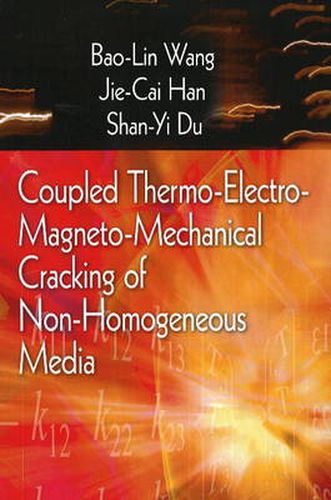Readings Newsletter
Become a Readings Member to make your shopping experience even easier.
Sign in or sign up for free!
You’re not far away from qualifying for FREE standard shipping within Australia
You’ve qualified for FREE standard shipping within Australia
The cart is loading…






In recent years, among numerous advanced composite materials, non-homogeneous materials, such as functionally graded materials and laminated media, have received considerable attention in the field of structural design subjected to external thermo-electro-mechanical loads. Such non-homogeneous materials are composed of two or more materials of different properties or functions. The gradual change of properties can be tailored to different applications and service environments. It is possible with these materials to obtain a combination of properties that cannot be achieved in conventional monolithic materials. A typical example of non-homogeneous materials is the composites fabricated by combining piezoelectric ceramics with other materials. Such non-homogeneous materials are usually used for constructions of intelligent systems. The thermo-electro-mechanical properties of these advanced materials change with spatial positions. The knowledge of fracture behaviour of non-homogeneous materials is important in order to evaluate their structural integrity. A key feature of fracture which distinguishes non-homogeneous materials from homogeneous materials is that the resistance of the former to fracture and damage tolerance varies spatially. Consequently, analyses of fracture in non-homogeneous materials are considerably more complex than in the corresponding homogeneous case of the same specimen and crack geometry subjected to the same loading conditions. Associated complications involving spatially varying material constants have demanded the re-examination of the elastic crack problem. This book brings together the diverse achievements in the field.
$9.00 standard shipping within Australia
FREE standard shipping within Australia for orders over $100.00
Express & International shipping calculated at checkout
In recent years, among numerous advanced composite materials, non-homogeneous materials, such as functionally graded materials and laminated media, have received considerable attention in the field of structural design subjected to external thermo-electro-mechanical loads. Such non-homogeneous materials are composed of two or more materials of different properties or functions. The gradual change of properties can be tailored to different applications and service environments. It is possible with these materials to obtain a combination of properties that cannot be achieved in conventional monolithic materials. A typical example of non-homogeneous materials is the composites fabricated by combining piezoelectric ceramics with other materials. Such non-homogeneous materials are usually used for constructions of intelligent systems. The thermo-electro-mechanical properties of these advanced materials change with spatial positions. The knowledge of fracture behaviour of non-homogeneous materials is important in order to evaluate their structural integrity. A key feature of fracture which distinguishes non-homogeneous materials from homogeneous materials is that the resistance of the former to fracture and damage tolerance varies spatially. Consequently, analyses of fracture in non-homogeneous materials are considerably more complex than in the corresponding homogeneous case of the same specimen and crack geometry subjected to the same loading conditions. Associated complications involving spatially varying material constants have demanded the re-examination of the elastic crack problem. This book brings together the diverse achievements in the field.